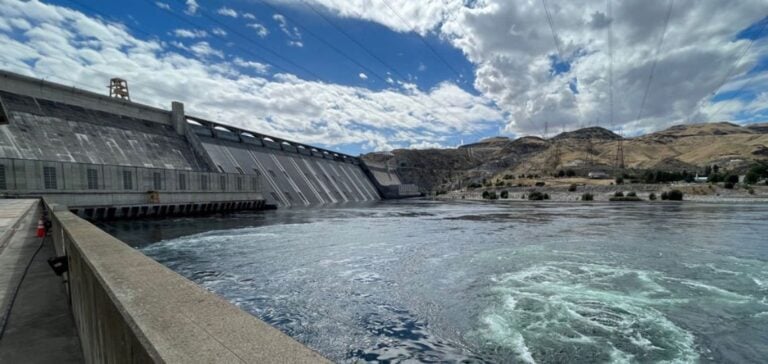The U.S. Department of Energy (DOE) is allocating $430 million to modernize 293 hydroelectric facilities across 33 states.
These facilities, with an average age of 79 years, require improvements to ensure their reliability and meet the demands of today’s power grid.
The program, funded by the Bipartisan Infrastructure Law, focuses on dam safety, grid resilience and environmental improvements.
Focus on network safety and resilience
The “Maintaining and Enhancing Hydroelectricity Incentives” program mainly supports projects related to dam safety (149 projects) and grid resilience (84 projects).
The modernization of these infrastructures is designed to prevent failures and stabilize the power grid.
In addition, 60 projects are dedicated to environmental improvements, without adding new generating capacity.
The aim is to optimize the existing infrastructure without altering the structure of the current energy mix.
Federal funding covers up to 30% of capital costs, with a ceiling of $5 million per project.
The incentive is complemented by more than $2.38 billion in private funding, demonstrating the commitment of companies to maintaining and strengthening their hydroelectric assets.
Breakdown of projects and main players
The states most concerned by this initiative are California, with 39 projects, and New York, with 35. These states are home to a significant proportion of the US hydropower fleet, and the investments are aimed at securing electricity supplies while strengthening existing infrastructures. Major industry players such as Southern Co., PG&E Corp. and PacifiCorp are among the beneficiaries of these funds. The program focuses on improving operational efficiency and the longevity of facilities, crucial aspects in maintaining grid balance.
Future developments and regulatory framework
The DOE is planning a second round of funding for the “Maintaining and Enhancing Hydroelectricity Incentives” program next year.
At the same time, two other hydroelectric incentives, the “Hydroelectric Production Incentives” and the “Hydroelectric Efficiency Improvement Incentives”, will continue to encourage the optimization of existing facilities.
These programs are part of a regulatory framework that seeks to reinforce energy security and maintain a stable grid without major changes to the current generation mix.






















